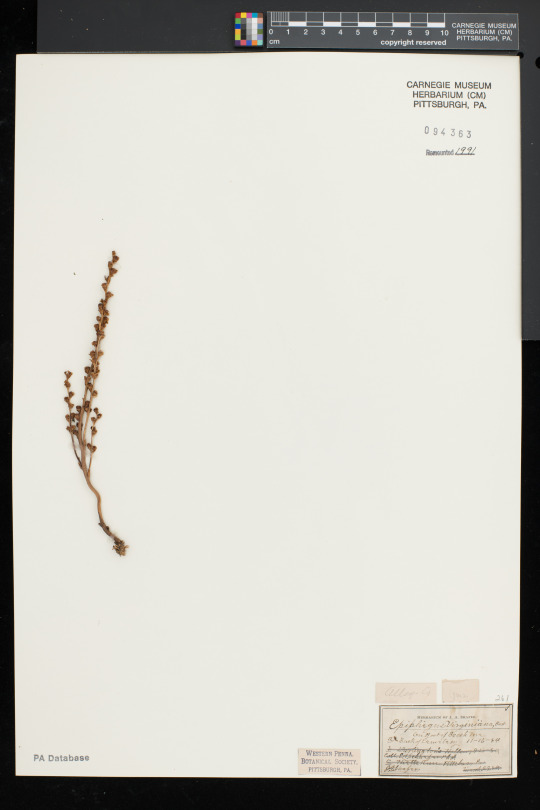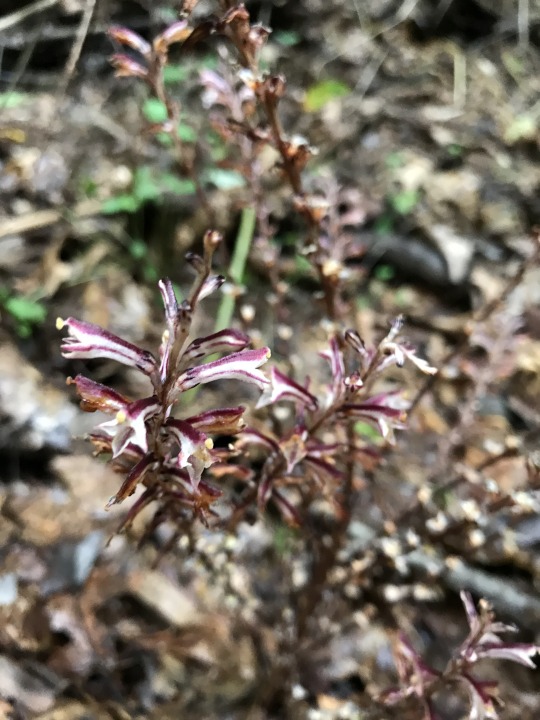by Mason Heberling

Not all plants have leaves. Beech drops (Epifagus virginiana) is one such example.
This specimen was collected on November 16, 1884 growing on the root of a beech tree (Fagus grandifolia) at the back of a cemetery in Allegheny county. The specimen was collected by John Shafer, who a decade later became the first curator of botany at the Carnegie Museum of Natural History.
Beech drops is a parasitic plant – rather than having leaves to photosynthesize, the species produces root-like structures (called haustorium) that parasitizes roots of beech trees.
The genus “Epifagus” refers to this parasitism on beech (“epi”= upon; “fagus” = beech).
Beech drops are in the broomrape family (Orobanchaceae), which is comprised mostly of parisitic plants.
Check out the beautiful, distinctive purple and white flowers in late summer to autumn.

Mason Heberling is Associate Curator of Botany at Carnegie Museum of Natural History.
Botanists at the Carnegie Museum of Natural History share digital specimens from the herbarium on dates they were collected. They have embarked on a three-year project to digitize nearly 190,000 plant specimens collected in the region, making images and other data publicly available online. This effort is part of the Mid-Atlantic Megalopolis Project (mamdigitization.org), a network of thirteen herbaria spanning the densely populated urban corridor from Washington, D.C. to New York City to achieve a greater understanding of our urban areas, including the unique industrial and environmental history of the greater Pittsburgh region. This project is made possible by the National Science Foundation under grant no. 1801022.
